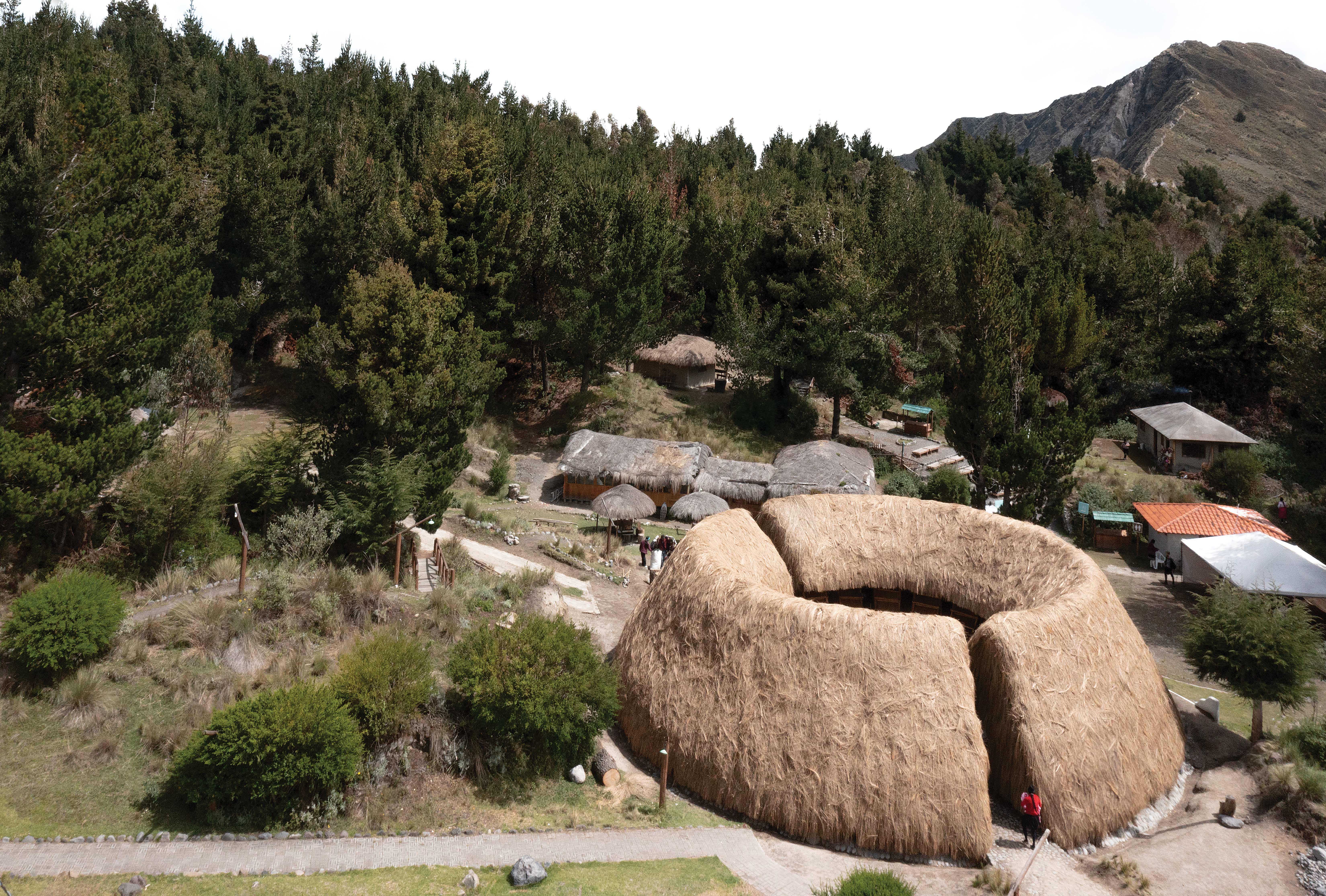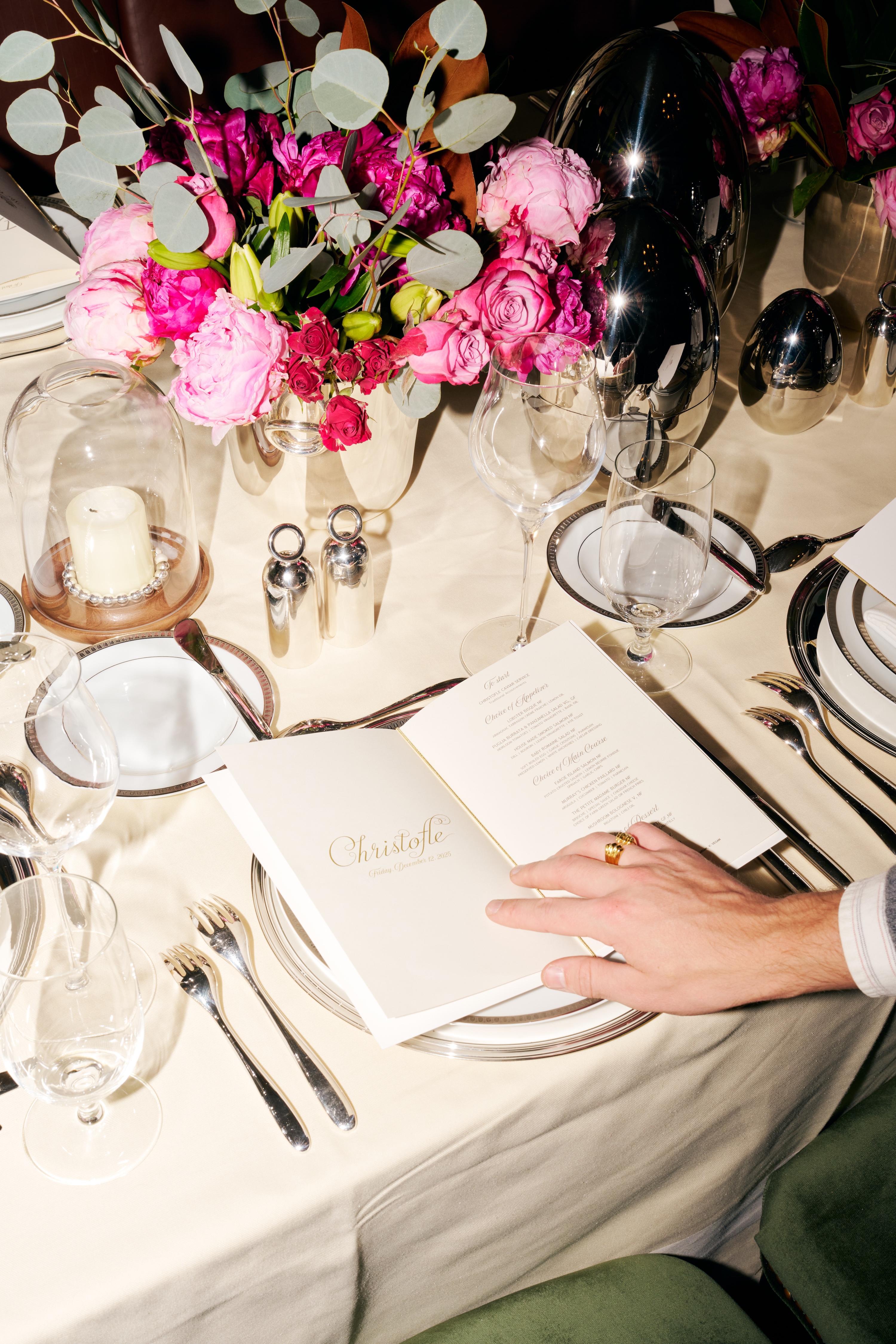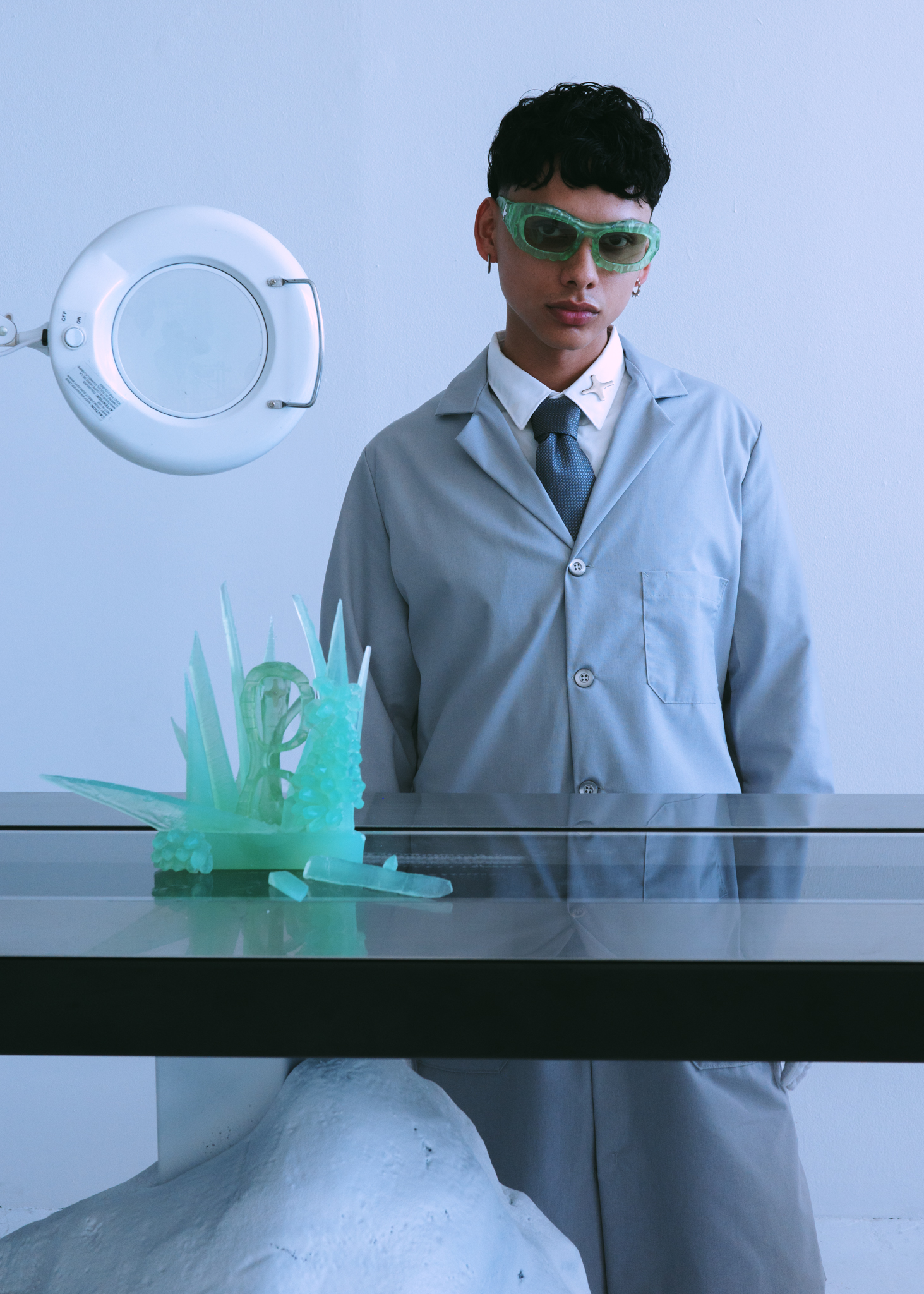

“Have I always wanted to be an artist? Yes! In fact, I would say I didn’t have a choice.” That’s because Amsterdam-based artist Amie Dicke was born into an exceptionally creative gene pool -- her father was an interior designer, her mother a stylist, her grandfather an architect, and her grandmother a poet. So she “gave in” and attended art academy. Her multivalent work now encompasses excavated architectural history, recontextualized design elements, manipulated fashion photographs, found objects, redacted texts, and other innovative two- and three-dimensional strategies of obscuring and revealing as required.
It’s tempting to assign a narrative of meaning to the parallels between her work and her DNA — especially since Dicke has spoken eloquently about how the urge to find her place in the world has informed her practice — but, just like in Dicke’s art, what’s happening under the surface of this compelling synergy is anything but tidy. “We are walking in history every day. We are so full of images and knowledge, we are so connected to ideas, aesthetics, whatever. To me, it’s really about touching, marking the place where I am, it has to do with being in the Now. My work is not about history, any more than it was ever about beauty -- it’s about paying attention.”
Paying attention sometimes take on a quite literal meaning for Dicke, because she incorporates found items into her work. “I’ve been picking things up in the street since I was a child. My mom used to hate it! But it makes me happy every day. Nowadays it’s bike bells. Amsterdam’s streets are covered with them, stuck in the cobblestones and asphalt. But it could be anything.”


One recent obsession that still yields results has been Bic pens. She breaks them up and redresses each part for unique new destinies. “Using the plastic tubes is a side-effect from a happy accident, but as left-overs they are even more beautiful. The little metal points are like tiny bullets or computer pointer icons. I’ve got thousands of them here.”
Being inspired by ordinary, lost materials and using them in non-traditional ways has been an element of her work from the beginning. She first became internationally appreciated for her manipulated magazine photographs, which she treats as found objects just like bike bells and Bic pens, truly lost and ripe for new lives. First with cutting and slicing, then more viscerally with nails and screws, then with blotting out, and now with sandpaper, she has evolved several different strategies over the years for “correcting” found images by removing facial expressions and other key features.
“You start to pay attention to the sides, corners, and margins, and you are forced to look at what’s left, what has been there all along, but you don’t notice until you can discover the background.” Her use of the word “correction” in this context is telling. “It’s actually very positive!” she says. “It’s important to let the new have a chance to come in. The world of images is too filled up. I need to create empty space to insert myself.”
* * *
Written by: Shana Nys Dambrot
 
“Have I always wanted to be an artist? Yes! In fact, I would say I didn’t have a choice.” That’s because Amsterdam-based artist Amie Dicke was born into an exceptionally creative gene pool -- her father was an interior designer, her mother a stylist, her grandfather an architect, and her grandmother a poet. So she “gave in” and attended art academy. Her multivalent work now encompasses excavated architectural history, recontextualized design elements, manipulated fashion photographs, found objects, redacted texts, and other innovative two- and three-dimensional strategies of obscuring and revealing as required.
It’s tempting to assign a narrative of meaning to the parallels between her work and her DNA — especially since Dicke has spoken eloquently about how the urge to find her place in the world has informed her practice — but, just like in Dicke’s art, what’s happening under the surface of this compelling synergy is anything but tidy. “We are walking in history every day. We are so full of images and knowledge, we are so connected to ideas, aesthetics, whatever. To me, it’s really about touching, marking the place where I am, it has to do with being in the Now. My work is not about history, any more than it was ever about beauty -- it’s about paying attention.”
Paying attention sometimes take on a quite literal meaning for Dicke, because she incorporates found items into her work. “I’ve been picking things up in the street since I was a child. My mom used to hate it! But it makes me happy every day. Nowadays it’s bike bells. Amsterdam’s streets are covered with them, stuck in the cobblestones and asphalt. But it could be anything.”


One recent obsession that still yields results has been Bic pens. She breaks them up and redresses each part for unique new destinies. “Using the plastic tubes is a side-effect from a happy accident, but as left-overs they are even more beautiful. The little metal points are like tiny bullets or computer pointer icons. I’ve got thousands of them here.”
Being inspired by ordinary, lost materials and using them in non-traditional ways has been an element of her work from the beginning. She first became internationally appreciated for her manipulated magazine photographs, which she treats as found objects just like bike bells and Bic pens, truly lost and ripe for new lives. First with cutting and slicing, then more viscerally with nails and screws, then with blotting out, and now with sandpaper, she has evolved several different strategies over the years for “correcting” found images by removing facial expressions and other key features.
“You start to pay attention to the sides, corners, and margins, and you are forced to look at what’s left, what has been there all along, but you don’t notice until you can discover the background.” Her use of the word “correction” in this context is telling. “It’s actually very positive!” she says. “It’s important to let the new have a chance to come in. The world of images is too filled up. I need to create empty space to insert myself.”
* * *
Written by: Shana Nys Dambrot

“Have I always wanted to be an artist? Yes! In fact, I would say I didn’t have a choice.” That’s because Amsterdam-based artist Amie Dicke was born into an exceptionally creative gene pool -- her father was an interior designer, her mother a stylist, her grandfather an architect, and her grandmother a poet. So she “gave in” and attended art academy. Her multivalent work now encompasses excavated architectural history, recontextualized design elements, manipulated fashion photographs, found objects, redacted texts, and other innovative two- and three-dimensional strategies of obscuring and revealing as required.
It’s tempting to assign a narrative of meaning to the parallels between her work and her DNA — especially since Dicke has spoken eloquently about how the urge to find her place in the world has informed her practice — but, just like in Dicke’s art, what’s happening under the surface of this compelling synergy is anything but tidy. “We are walking in history every day. We are so full of images and knowledge, we are so connected to ideas, aesthetics, whatever. To me, it’s really about touching, marking the place where I am, it has to do with being in the Now. My work is not about history, any more than it was ever about beauty -- it’s about paying attention.”
Paying attention sometimes take on a quite literal meaning for Dicke, because she incorporates found items into her work. “I’ve been picking things up in the street since I was a child. My mom used to hate it! But it makes me happy every day. Nowadays it’s bike bells. Amsterdam’s streets are covered with them, stuck in the cobblestones and asphalt. But it could be anything.”


One recent obsession that still yields results has been Bic pens. She breaks them up and redresses each part for unique new destinies. “Using the plastic tubes is a side-effect from a happy accident, but as left-overs they are even more beautiful. The little metal points are like tiny bullets or computer pointer icons. I’ve got thousands of them here.”
Being inspired by ordinary, lost materials and using them in non-traditional ways has been an element of her work from the beginning. She first became internationally appreciated for her manipulated magazine photographs, which she treats as found objects just like bike bells and Bic pens, truly lost and ripe for new lives. First with cutting and slicing, then more viscerally with nails and screws, then with blotting out, and now with sandpaper, she has evolved several different strategies over the years for “correcting” found images by removing facial expressions and other key features.
“You start to pay attention to the sides, corners, and margins, and you are forced to look at what’s left, what has been there all along, but you don’t notice until you can discover the background.” Her use of the word “correction” in this context is telling. “It’s actually very positive!” she says. “It’s important to let the new have a chance to come in. The world of images is too filled up. I need to create empty space to insert myself.”
* * *
Written by: Shana Nys Dambrot


















